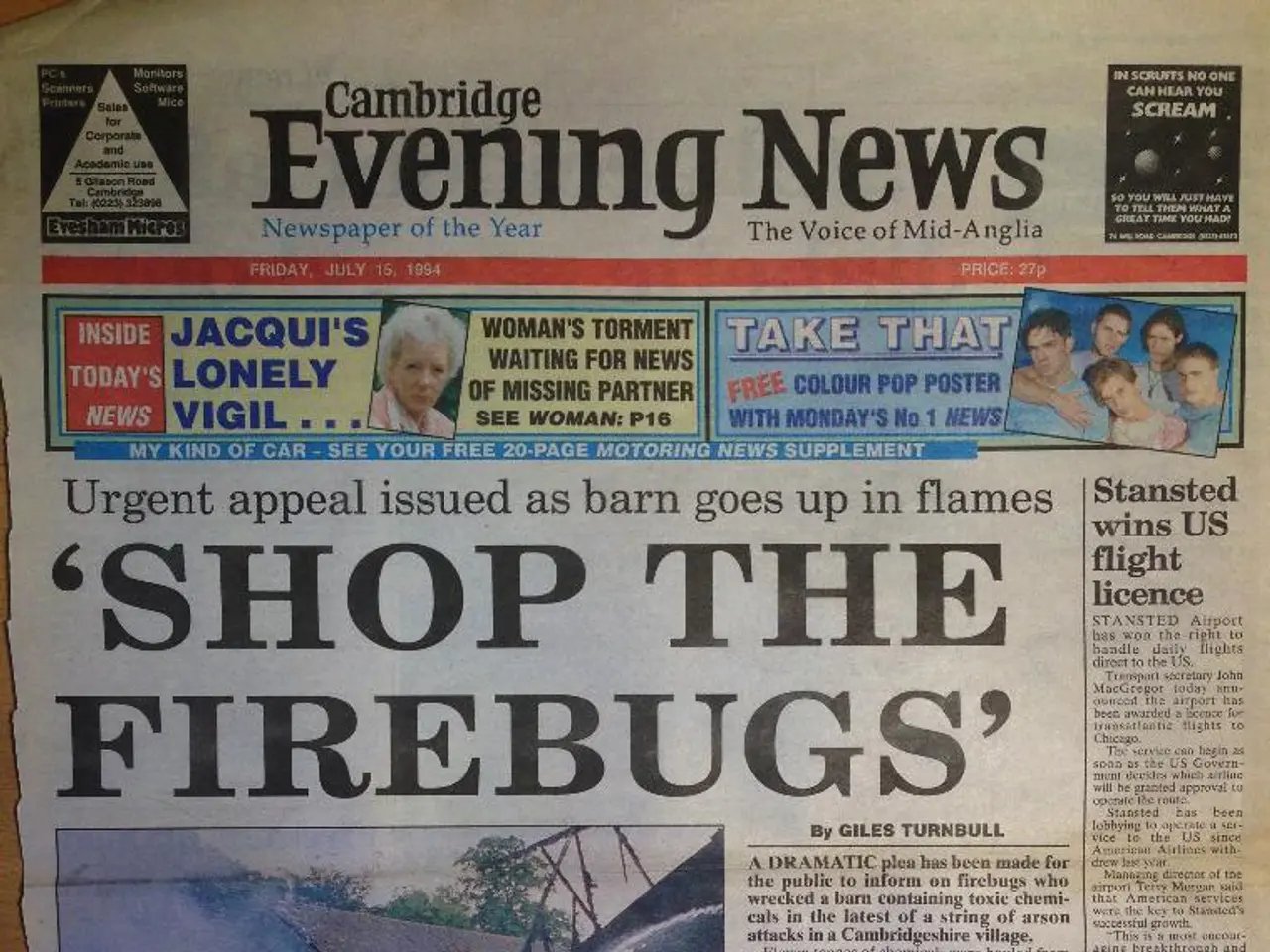Lung Infection in Preschoolers and School-aged Kids
Pneumonia, while not contagious itself, can be caused by bacterial or viral infections. It's crucial to maintain good hygiene practices, ensure children's vaccines are up-to-date, and avoid exposure to harmful chemicals and tobacco to lower the risk of pneumonia.
Symptoms of pneumonia can vary, but may include high fever, extreme fatigue, vomiting, diarrhea, inflamed windpipe, breathlessness, high blood pressure, headache, muscle pain, and joint pain. Doctors can diagnose pneumonia through blood tests, x-rays, breathing tests, and a routine physical examination.
The treatment approach for pneumonia depends on its type and severity. For bacterial pneumonia, antibiotics are the mainstay of treatment, with oral amoxicillin being the first-line antibiotic for outpatient pediatric community-acquired pneumonia. Severe cases may require hospitalization with intravenous antibiotics and oxygen therapy.
Viral pneumonia, especially pneumonia caused by respiratory syncytial virus (RSV), generally does not respond to antibiotics. Supportive care such as fever and pain management, oxygen supplementation, and hydration are standard. A promising new approach for pneumonia caused by RSV and bacterial co-infections in infants aged 1-24 months is nasal-spraying Bacillus spore probiotics, which have shown to safely reduce symptom duration and need for oxygen therapy in clinical trials.
In summary, effective treatment for pneumonia in children depends on accurate diagnosis of pneumonia type and severity. Antibiotics are used for bacterial causes, while supportive care with possible adjunct probiotics is used for viral or mixed infections.
It's important to note that viral pneumonia can weaken a child's immune system significantly, and home care may be necessary for viral and walking pneumonia. Home care includes keeping the child in open, airy spaces, ensuring they stay hydrated, maintaining their energy levels through food, and regularly updating the doctor on their condition.
Children under the age of 2 are at a higher risk of getting pneumonia, and antibiotics are only recommended for bacterial pneumonia in children. Consult a pediatrician immediately if any symptoms of pneumonia begin to manifest.
The lung, made of numerous air sacs known as alveoli, can become filled with liquid or pus due to pneumonia, making it hard for a child to breathe normally and reducing the amount of oxygen in their body and bloodstream. The length of pneumonia can last between four days to a week, up to six weeks in the worst-case scenario.
Bacterial pneumonia is considered the most severe version of pneumonia, with symptoms including a sudden high fever, cough, fast and erratic breathing, flared nostrils, blue lips or nails, a sunken chest, abdominal pain, vomiting, and diarrhea. Severe pneumonia in children can become fatal if left untreated or unattended.
Common bacteria that cause pneumonia include Streptococcus pneumoniae and Mycoplasma pneumoniae. Common viruses that cause pneumonia include influenza, respiratory syncytial virus, and cold viruses. People over the age of 65 are also at a higher risk of getting pneumonia.
It's essential to take the full course of antibiotics to prevent the bacteria from becoming immune to the antibiotics. Probiotics such as nasal-spraying Bacillus spores are an innovative therapy but currently experimental and more suited for resource-limited settings.
References: 1. Centers for Disease Control and Prevention. (2021). Pneumonia in Children. https://www.cdc.gov/childrenshealth/conditions/pneumonia.html 2. World Health Organization. (2021). Pneumonia. https://www.who.int/news-room/fact-sheets/detail/pneumonia 3. American Academy of Pediatrics. (2019). Diagnosis, Evaluation, and Initial Management of Community-Acquired Pneumonia in Infants, Children, and Adolescents. https://pediatrics.aappublications.org/content/144/Supplement_3/S117 4. World Health Organization. (2024). Guidelines for the Diagnosis and Management of Childhood Pneumonia. https://www.who.int/publications/i/item/9789240038246 5. World Health Organization. (2022). WHO recommends oral amoxicillin as the standard first-line treatment for pneumonia in children. https://www.who.int/news-room/detail/12-01-2022-who-recommends-oral-amoxicillin-as-the-standard-first-line-treatment-for-pneumonia-in-children
Science plays a significant role in understanding the causes, diagnosis, and treatment of medical-conditions like pneumonia, a common respiratory infection. Parents should follow health-and-wellness guidelines, such as maintaining good hygiene, vaccinating children, and minimizing exposure to harmful chemicals and tobacco, to lower the risk of pneumonia development.




